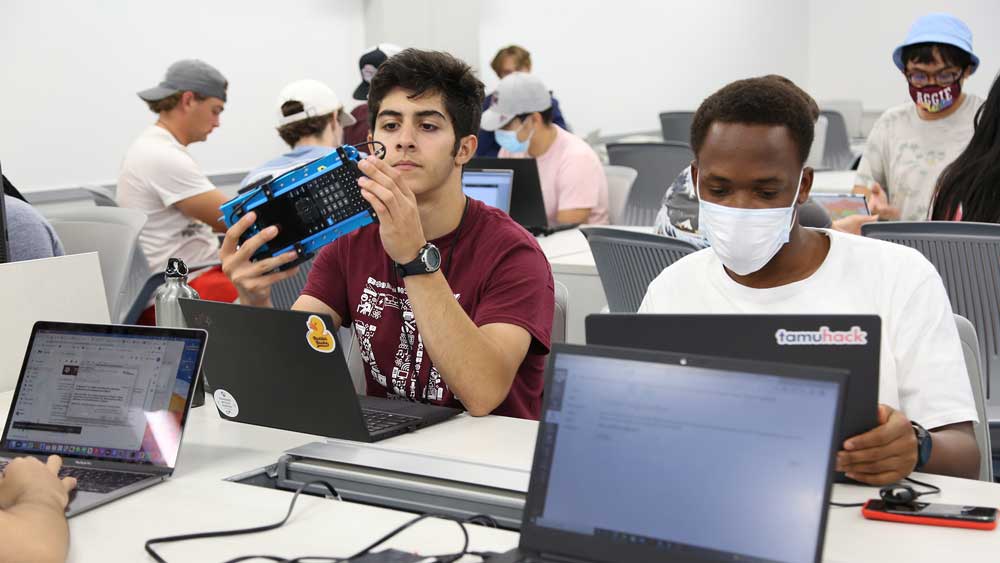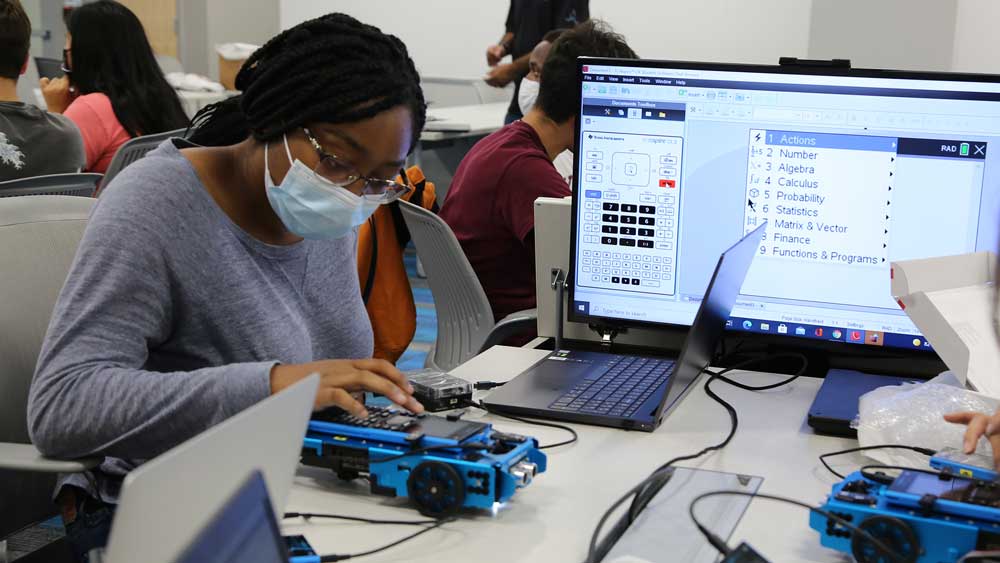
Texas Instruments (TI), the leading manufacturer and seller of semiconductors and integrated circuits, held a STEM night workshop on Oct. 4 for a group of students in the Texas A&M University College of Engineering. The workshop focused on using TI calculators to navigate a mobile robot through Python code.
“We’ve been working with TI for about three years now,” said Dr. Sonia Garcia, senior director of the Access and Inclusion program. “They are interested in really showing students the kind of engineering that Texas Instruments does. The goal is to introduce students to the company, networking, professional development, and also to project teams.”

Throughout the workshop, the engineers received hands-on training and explored their new skills through trial and error. The instructors engaged with the students and helped them with any miscalculations throughout the event.
Harshal Chhaya, assistant engineer with TI, was an instructor for the workshop.
“I am one of the engineers who worked on the products the students are using, so I really love going out and doing workshops where I can see the students actually using them,” said Chhaya.
These newly explored skills allowed for the engineering students to consider their career options as they prepare to enter such a competitive field. Knowing industry partners are already interested and invested in the College of Engineering gives students a leg up.
“They know our students have a lot of value and [that they] are really on top,” said Garcia. “Partnering with these companies really seals what we always thought, that our students are really that good.”

The event aimed to allow freshman engineers to get exposure to skills that the job market desires. TI focused on utilizing coding language in calculators for multipurpose use.
“We bring TI technology into labs. We also impart technical lectures in classrooms,” said Ayesha Mayhugh ’98, product and strategy manager for TI and electrical engineering graduate. “We also make sure that the faculty have [the tools] industry requires in terms of hiring [our students]. So, having that knowledge helps [students] build that skill set that can make them very marketable.”
The students used pre-developed programs to stimulate a rover to move around without a remote control.
“My favorite part was when we worked with the rovers because they showed us some of the features that we can add to computer chips,” said Eyoel Ghebremeskel, a freshman engineering student. “We simulated a car backup camera with sounds using the proximity sensors on the rovers.”